▼ Push for digitisation top agenda for Gyan Sangam [01-31-17]
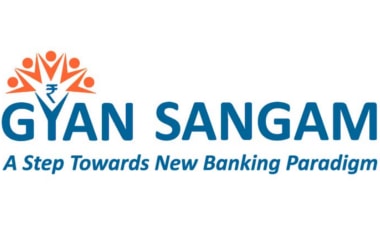 The push for digitisation in the wake of demonetisation and the proposal for public sector bank (PSB) consolidation are to top the agenda for Gyan Sangam. The push for digitisation in the wake of demonetisation and the proposal for public sector bank (PSB) consolidation are to top the agenda for Gyan Sangam.
This is the retreat for PSBs, government-owned Financial Institutions (FI) and insurance companies, slated for March.
The sessions on digitisation will include presentations on increasing the use of Artificial Intelligence (AI) systems. It will also study big data analytics in the banking & financial services industry in India.
The major slowdown in credit growth – to a more than six-decade low of 5.1% for the fortnight ended December 23 – and ways to revitalise it, as well as measures to effectively tackle bad loans will also be discussed.
The retreat would have discussions on automating many of these functions to ensure productivity improvement.
Strategies for strengthening the ‘banking correspondent’-network and increasing the usage of micro ATMs and Point of Sale machines will also be discussed.
The high-profile meeting will also deliberate upon the need for the autonomous Banks Board Bureau (BBB) to expedite banking reforms including PSB consolidation.
The BBB was set up to help select heads of public sector banks and financial institutions as well as assist banks with strategies and capital-raising plans.
Also on the agenda for discussion is the proposed National Asset Management Company (or a ‘bad bank’).
This is a special category asset reconstruction company with stakeholders including the government and the private sector for takeover and turnaround of bad loans, stressed assets and restructured assets.
|
▼ Karang : First cashless island of India [01-19-17]
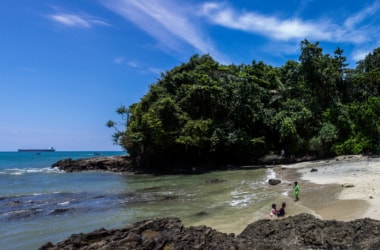 Karang, a small lake island in Manipur has become the first cashless island. Karang, a small lake island in Manipur has become the first cashless island.
The Union Ministry of Electronics and Information Technology under the Digital India programme declared this is the first cashless island in India.
The island has fulfilled the necessary criteria of the Centre.
Karang is located in the middle of Loktak, the largest freshwater lake in NE India.
Akodara was the first digital village in India in 2015.
|
▼ IMF cuts post demonetisation growth of India to 6.6 percent [01-17-17]
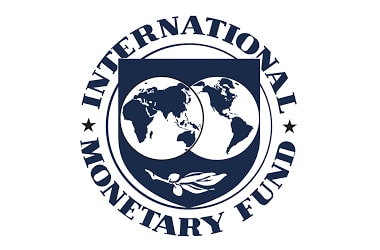 IMF has cut down India's growth rate for the current fiscal year to 6.6 percent. The previous estimate was 7.6%. IMF has cut down India's growth rate for the current fiscal year to 6.6 percent. The previous estimate was 7.6%.
The slowing of the growth rate is on account of temporary negative consumption shock of demonetisation after the WB decelerated India's growth estimates.
Growth forecast for the current and next fiscal year were trimmed by one percentage and 0.4 percentage points, due to temporary negative consumption shock .
This has been caused by cash shortage and payment disruption noted with recent currency note withdrawal and exchange, as per World Economic Outlook released by the IMF.
IMF also said after a lackluster outturn in 2016, economic activity will pick up in the next 2 years. This is more so for the emerging market and developing economies.
Global growth for 2016 is now 3.1 percent in line with the Oct 2016 forecast.
The economic activities in emerging markets and developing economies/EMDEs is to accelerate in 2017-2018 with global growth at 3.4 and 3.6 percent respectively.
India's growth in 2017 is projected at growth rate of 7.2% as against previous growth forecast of 7.6 percent.
Indian economy is expected to revive with 7.7% growth in 2018.
Cut in the growth rate comes after WB decelerated India's GDP growth for 2016-2017 fiscal to 7 percent from previous estimate of 7.6 percent citing impact of demonetisation.
India would regain momentum in coming years. India continues to be among the fastest growing countries in the emerging economies.
In 2016, China with a growth percentage of 6.7% has outperformed India. IMF has forecasted China's growth rate to 6.5% for 2017 based on continued policy support.
In 2018, China is projected to grow at 6 percent against India's 7.7%.
IMF: Know More
- Abbreviation stands for: International Monetary Fund
- Formation: 27 December 1945
- Type: International financial institution
- Headquarters: Washington, D.C., United States
- Membership: 189 countries
- Official language: English
- Managing Director: Christine Lagarde
- Main organ: Board of governors
- Parent organization: United Nations
- Staff: 2,700
|
▼ Central Government to set up 18 electronics manufacturing clusters [01-13-17]
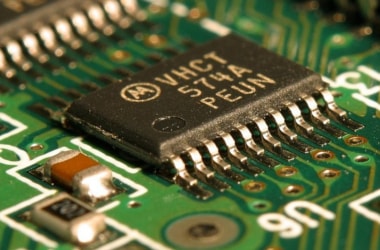 Centre plans to set up 18 electronics manufacturing clusters in 400 towns and cities. India's electronic manufacturing market will be worth USD 400 billion by 2020 according to some estimates. Centre plans to set up 18 electronics manufacturing clusters in 400 towns and cities. India's electronic manufacturing market will be worth USD 400 billion by 2020 according to some estimates.
Government is focusing on domestic production of technology products, according to Union Minister for Communications, Ravi Shankar Prasad at the Pravasi Haryana Divas 2017.
Digital payment infrastructure and service is set to be a rising industry. Haryana has a lot of potential and possibilities for innovation in the field of digital payment, internet, AI, digital education and cybersecurity.
Considerable potential is there for small and medium level enterprises to grow.
About 42 mobile phone manufacturing companies and 30 component factories have been established in the country.
India has close to 105 crore mobile phones , 10 crore Aadhaar cards, 500 billion internet connections and 350 billion smartphones.
|
▼ BIS revises standard for hallmarking of gold jewellery [01-11-17]
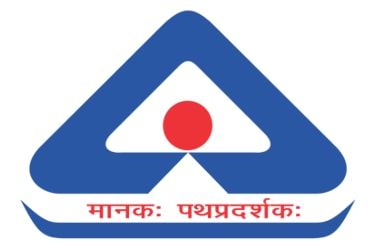 Bureau of Indian Standards (BIS) on 10th Jan said it has revised Indian Standard on gold hallmarking, which is effective from January 1 this year. Bureau of Indian Standards (BIS) on 10th Jan said it has revised Indian Standard on gold hallmarking, which is effective from January 1 this year.
Indian standard on gold hallmarking has been revised and has been made effective for implementation with effect from January 1, 2017.
The hallmarked gold jewellery will now be available in three grades of 14 carat, 18 carat and 22 carat.
The caratage will also be marked on jewellery in addition to fineness for convenience of consumers,
For 22 carat jewellery 22K will be marked in addition to 916 (22K916), for 18 carat jewellery 18K will be marked in addition to 750 (18K750) and for 14 carat jewellery, 14K will be marked in addition to 585 (14K585).
Hallmark on gold jewellery will now have four marks.
These are the BIS Mark, the purity in carat and fineness (22K916 for 22 carat), assaying centre's identification mark and jeweller's identification mark.
Know More About BIS
- The Bureau of Indian Standards (BIS) is the national Standards Body of India.
- It working under the aegis of Ministry of Consumer Affairs, Food & Public Distribution.
- Headquarters?: ?Manak Bhawan
- Agency executive?: ?: Alka Panda, Director General
- Formed?: ?23 December 1986
|
▼ Delhi Registers Highest Per Capita Income [01-3-17]
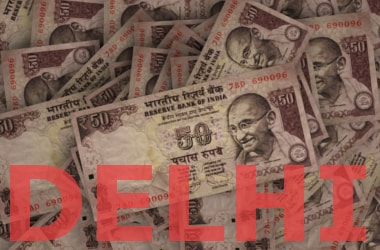 National capital Delhi has registered the highest per capita income among all states and union territories of the country with INR 2,80,000 during 2015-2016, according to the National Statistical handbook. National capital Delhi has registered the highest per capita income among all states and union territories of the country with INR 2,80,000 during 2015-2016, according to the National Statistical handbook.
Delhi's per capita income is three times the national average INR 93,293.
It was followed by Chandigarh and Sikkim with per capital incomes of INR 2,42,386 and INR 2,27,465.
Data released by Oxford Economics in Nov 2016 found Delhi has emerged as the economic capital of India.
It has overtaken Mumbai as per GDP in terms of purchasing power parity.
Chandigarh registered the second highest per capita income at 2.5 times the national average.
Chandigarh’s current figure of INR 2,42,386 is a meagre increase of over INR 1,699, or 0.7 per cent, compared to the previous year when it was INR 2,40,687, a statistical handbook released in Delhi showed.
Delhi’s current figure increased by over INR 28,000, or 13 per cent, compared to the previous year when it was INR 2,52,011.
The per capita income at the national level was found to be INR 93,293 during 2015-16.
|
▼ PMJDY: 26 crore accounts opened till date [01-3-17]
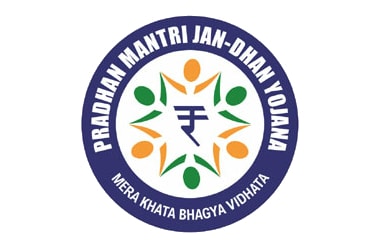 According to the fresh data released by the Finance Ministry, over 26 crore accounts have been opened under the Pradhan Mantri Jan Dan Yojana across the country till date. According to the fresh data released by the Finance Ministry, over 26 crore accounts have been opened under the Pradhan Mantri Jan Dan Yojana across the country till date.
Nearly 16 crore accounts have been opened in rural areas and more than 10 crore in the urban.
Over 71,5000 crore rupees has been deposited in these accounts.
Zero balance accounts have come down by nearly 24%.
Around 20 crore RuPay debit cards have also been issued under the scheme.
The PMJDY was launched in Aug 2014 by PM Narendra Modi to ensure financial inclusion for covering all households with at least one bank account.
More About PMJDY
- Government scheme launched by government of India.
- Aims to provide easy access to financial services such as Remittance, Credit, Insurance, Savings, Deposit and Pension.
- Financial inclusion scheme officially launched on 15th August 2014.
- East financial access ensured to everyone at national level.
|
| Chronology of events |
|
An exotic variety of Black rice or purple rice recently has gained popularity in Assam. It was recently sown by the local farmers for the first time in Barak Valley. The Black rice is also known as world super food.
|
|
As per the 'First Advance Estimates of National Income, 2016-17' released by the Central Statistics Office (CSO), the per capita net national income during 2016-17 is "estimated to be Rs 103,007" at current prices.
|
|
With the government taking steps to improve business climate, total FDI inflows in the last two-and-a-half years have touched USD 130 billion, Prime Minister Narendra Modi said adding that 'Make in India' initiative has become the "biggest brand" that the country has ever had.
|
|
The World Bank on Jan 10, 2017 decelerated India's growth for 2016-17 fiscal to a "still robust" 7 percent from its previous estimate of 7.6 due to demonetisation, but asserted that the country would regain momentum in the following years with 7.6 and 7.8 percent growth.
|
|
India on Jan 11, 2017 announced a $100 million Line of Credit to Kenya for agricultural mechanisation after talks between Prime Minister Narendra Modi and Kenyan President Uhuru Kenyatta.
|
|
India’s factory output(IIP) grew by a robust 5.7 percent in November, running contrary to retail sales data.
|
|
The Centre will soon rank states on a digital transaction index as part the push to make India a less-cash economy. Government think tank Niti Aayog has begun the exercisie by reaching out to states to collate data.
|
|
Richest 1% own 58% of total wealth in India, according to Oxfam; In signs of rising income inequality, India’s richest 1 per cent now hold a huge 58 per cent of the country’s total wealth - higher than the global figure of about 50 per cent.
|
|
According to the United Nations World Economic Situation and Prospects (WESP) 2017 report, India’s economy is projected to grow by 7.7% in fiscal 2017 and 7.6% in 2018.
|
|
The Competition Commission of India (CCI) imposed a penalty of nearly Rs. 206 crore on seven cement companies for bid-rigging and cartelisation.
|
|
Government has announced that over 99% of Indians aged 18 i.e. more than 111 crore residents have enrolled themselves for the unique identification number (Aadhaar cards).
|